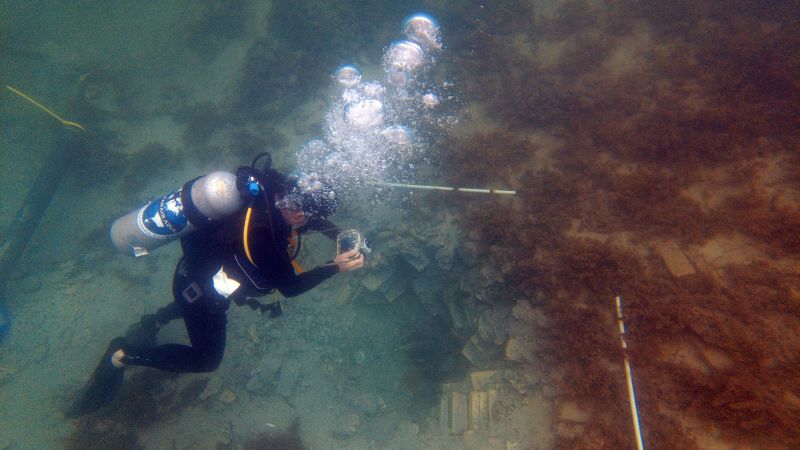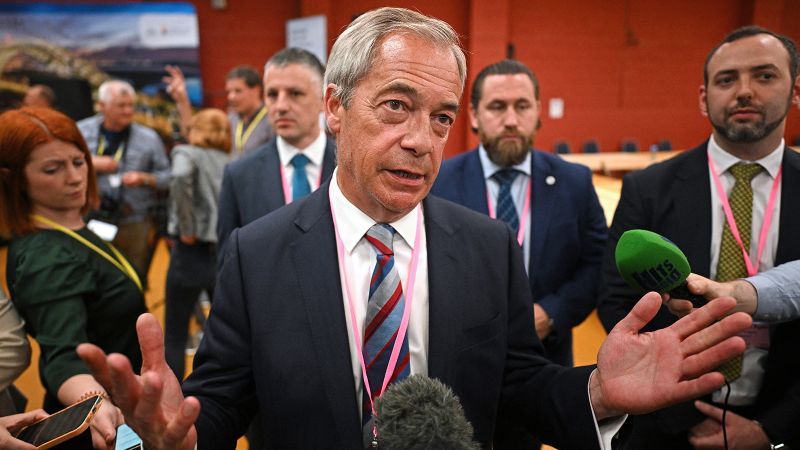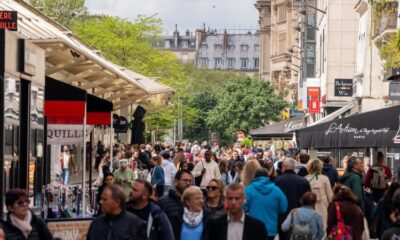Sign up for CNN’s Wonder Theory science newsletter. Explore the universe with news on fascinating discoveries, scientific advancements and more.
CNN
—
Marine archaeologists have discovered that two shipwrecks in Costa Rica are the remains of Danish slave ships missing for centuries — a finding that restores the ancestral lineage of an entire Costa Rican community more than 300 years after the vessels’ occupants reached its shores.
The wrecks had long been known to sit in shallow waters off Cahuita National Park, on Costa Rica’s southern Caribbean coast, according to the National Museum of Denmark.
However, for years, they were believed to be pirate ships, the museum said in a news release.
Fisherpeople who established themselves in the area in 1826 thought this because the ships’ remains were dispersed and broken. They believed the two ships might have been engaged in a fight and capsized, Maria Suarez Toro, founder of the local community initiative Ambassadors of the Sea Community Diving Center, told CNN Friday.
The ships’ identities were only called into question in 2015, when American marine archaeologists found yellow bricks in one of the wrecks.

This discovery was significant because yellow bricks were produced in the German town of Flensburg in the 18th and 19th centuries for use in Denmark and its colonies. They were not in fashion in other European countries at the time, according to the museum.
Historical sources had recorded that two Danish slave vessels were shipwrecked off the coast of Central America in 1710: The Fridericus Quartus was set on fire, while the anchor rope of the Christianus Quintus was cut and the ship was swept away.
But the location of the wrecks was not known — until now.
Marine archaeologists from the National Museum and Denmark’s Viking Ship Museum carried out an underwater excavation of the Costa Rica wrecks in 2023, taking wood from one, as well as samples of bricks, and finding several clay pipes.
Researchers at the National Museum and the University of Southern Denmark then carried out scientific analyses that confirmed the historical accounts, the museum noted.
Tree-ring dating revealed that oak wood from one of the wrecks originated from the western part of the Baltic Sea, which encompasses Denmark, northeastern Germany and southern Sweden. The wood was from a tree cut down between 1690 and 1695, according to the museum.
The yellow bricks were measured and found to be the same size as the ones made in Flensburg for the Danish.
The clay used in the bricks was found to be from southern Denmark, either from the small town of Egernsund or from Iller Strand, both of which had large brick-making industries in the 18th century.
The clay pipes were also revealed to be Danish, with their size, shape and designs indicating that they were made just before 1710, when the ships were wrecked.
“The analyses are very convincing and we no longer have any doubts that these are the wrecks of the two Danish slave ships,” said marine archaeologist David Gregory, a research professor and head of the new maritime research center, Njord, at the National Museum of Denmark, in the news release.
“The bricks are Danish and the same goes for the timbers, which are additionally charred and sooty from a fire. This fits perfectly with the historical accounts stating that one of the ships burnt,” he added.
Rebellion and mutiny
Gregory led the excavations alongside marine archaeologist Andreas Kallmeyer Bloch, who is also a curator at the National Museum.
“It’s been a long process and I’ve come close to giving up along the way, but this is undoubtedly the craziest archaeological excavation I’ve yet been part of,” Bloch said in the news release.
“Not only because it matters greatly to the local population, but also because it’s one of the most dramatic shipwrecks in the history of Denmark, and now we know exactly where it happened. This provides two pieces that have been missing from the history of Denmark,” he added.
Bloch told CNN on Friday that the discovery is significant in part because of the “dramatic events involved with (the ships’) journey from Copenhagen to West Africa, and from there to the shores of Cahuita in Costa Rica.”
A rebellion by the enslaved people, a “horrible” navigational mistake and a mutiny by crew members when they arrived at Cahuita are among the events documented in the Danish archives, Bloch said.
The rebellion took place aboard the Fridericus Quartus, which was traveling from Ghana to the Dutch colony of St. Thomas. The uproar, combined with the French and English declaring war, influenced the decision by the Dutch to send the ship with a partner vessel, Toro said.
There were 800 people across the two ships, which got lost because of smog, she said. Instead of going north of a light they saw, which might have been Barbados, they went south, ending up at Costa Rica on March 2.
Fear of pirates and the natives led to two days of arguments between the captains over whether they should go onto the shore to look for food and water. This led to a mutiny among the sailors and the enslaved people — after which around 650 people remained.
The “most dramatic part is the lives that changed due to this event. More than 600 Africans were left on the beach, in what today is Cahuita National Park,” Bloch said.
“The discovery is significant for Danish history, and the fact that we can tie our history to Costa Rica. But it is even more significant for the local population in Costa Rica as it has a direct meaning for the identity of the local people,” he added.
The effort to unravel the identity of the ships and connect it to the identity of the community has been a decade-long project stewarded by a group of youth scuba divers of African and Indigenous origins, said Toro, adding that they feel “pride because they have found their roots.”
The discovery “changes also the story about this region,” she said, adding that it proves Afro-Costa Ricans were in the province of Limon “a hundred years before it was registered in official history.”
The endeavor by the community and the scientists to identify the sunken slave ships appeared in the 2020 television documentary series “Enslaved,” hosted by Samuel L. Jackson.
Celia Ortíz, from the Costa Rican city of Cartago, said her 103-year-old mother is a descendant of Miguel Maroto, one of the enslaved men who disembarked from one of the ships, according to Ambassadors of the Sea. Ortiz said finding her ancestry even late in her mother’s life “brought new light to our lives.”
























